Yueyang Tower Scenic Area
2022-06-07
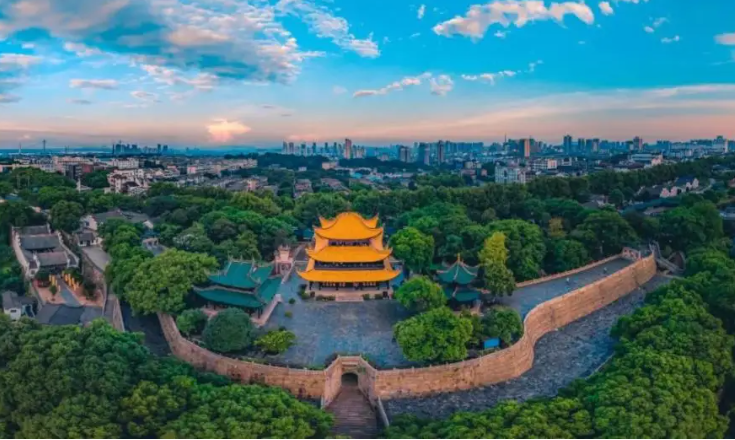
The scenic area covers an area of 670 mu (about 44.7 hectares) and is divided into a closed-off management area for cultural relic protection and an open leisure area, including Sanzui Pavilion, the Tomb of Xiao Qiao, Zhanyue Gate, Bianhe Street, Lv Dongbin’s Temple and many other attractions.



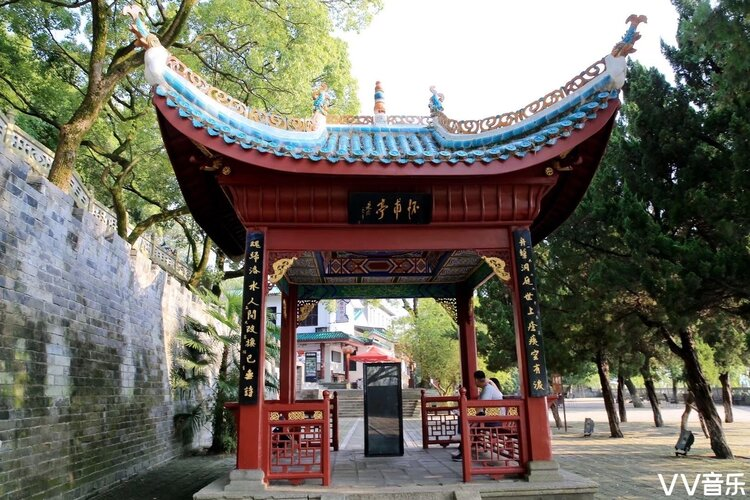
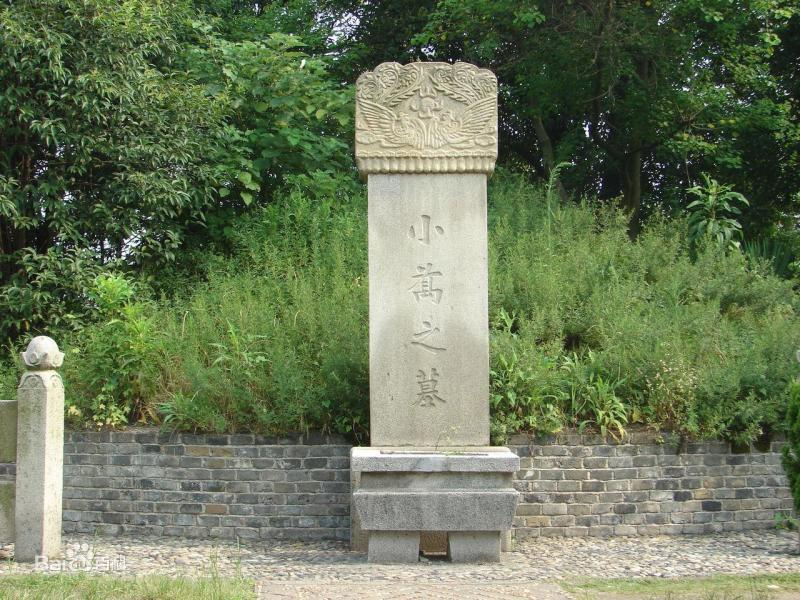
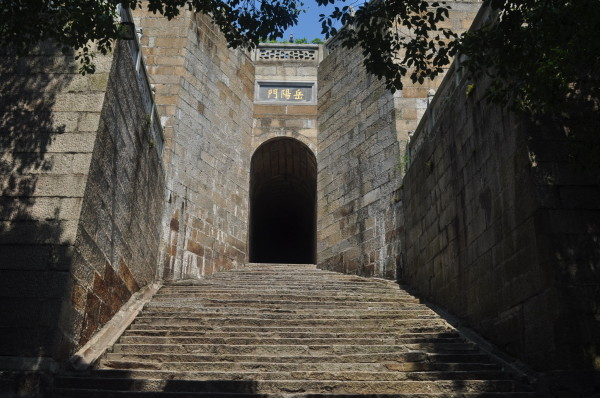
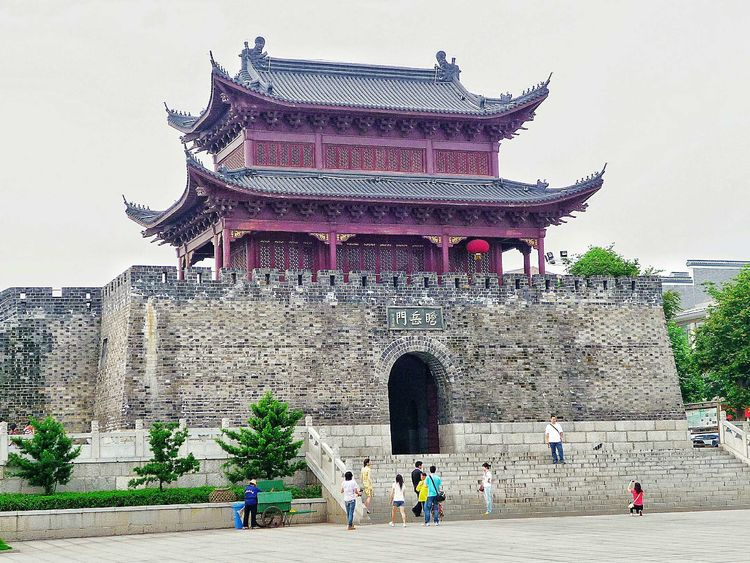
Ancient City Wall

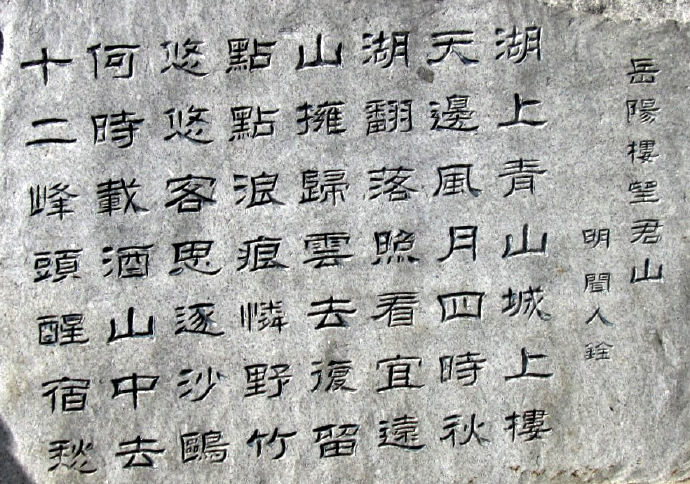
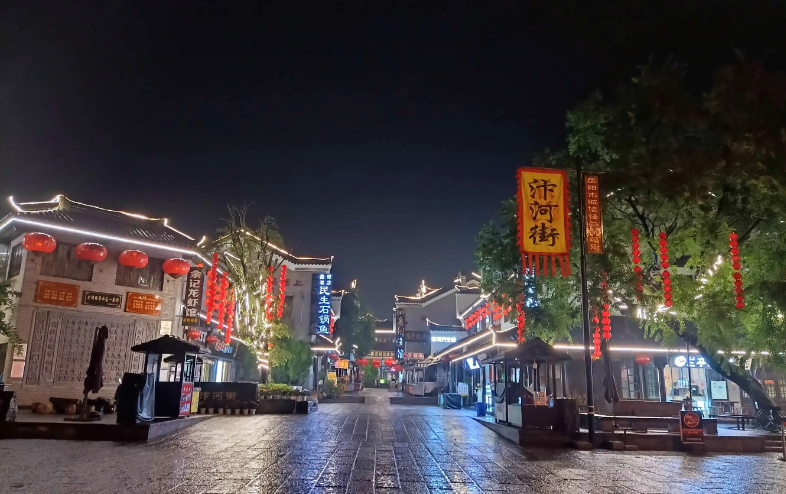

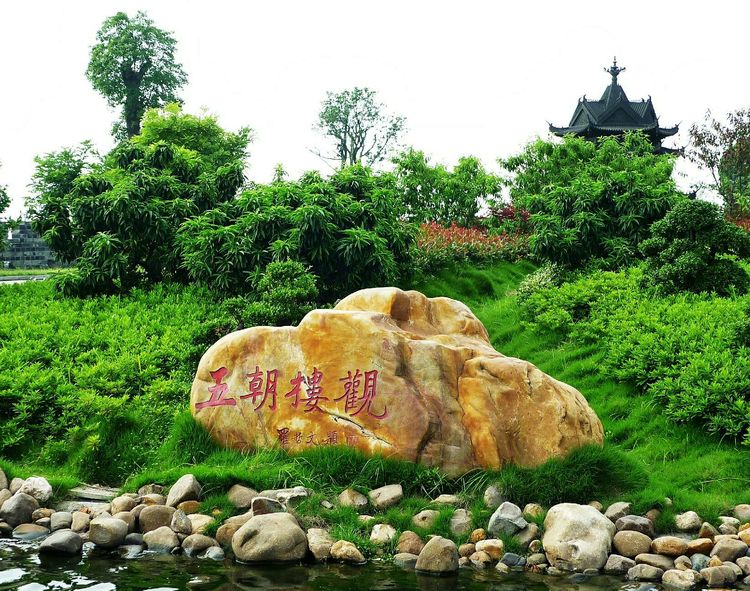

Yueyang Tower in the Song Dynasty



Yueyang Tower in the Qing Dynasty
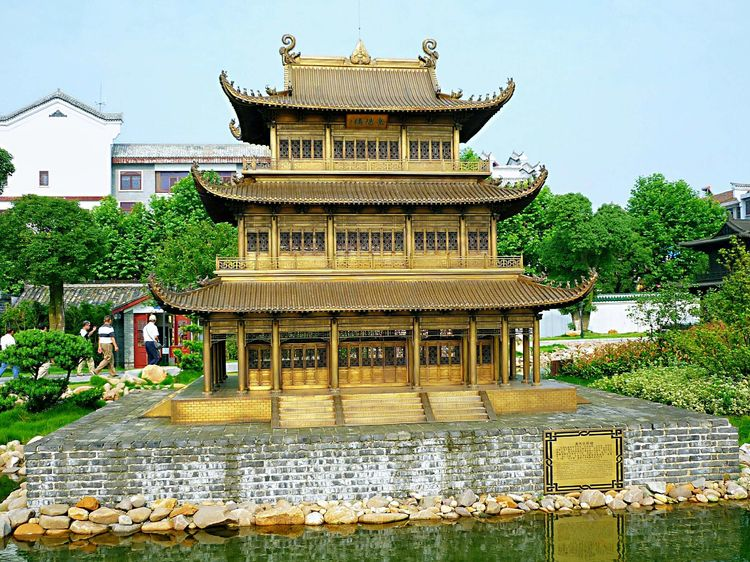
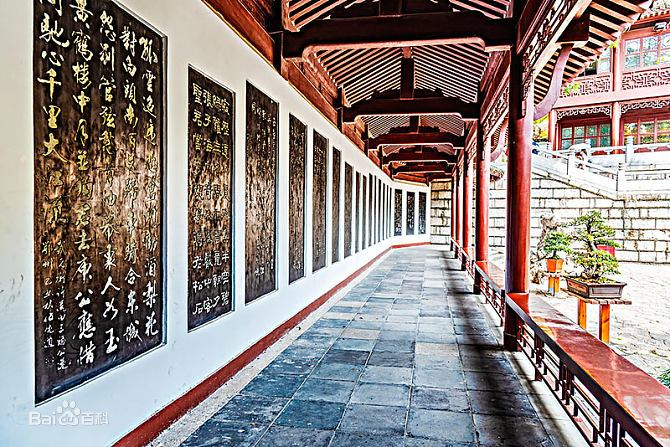

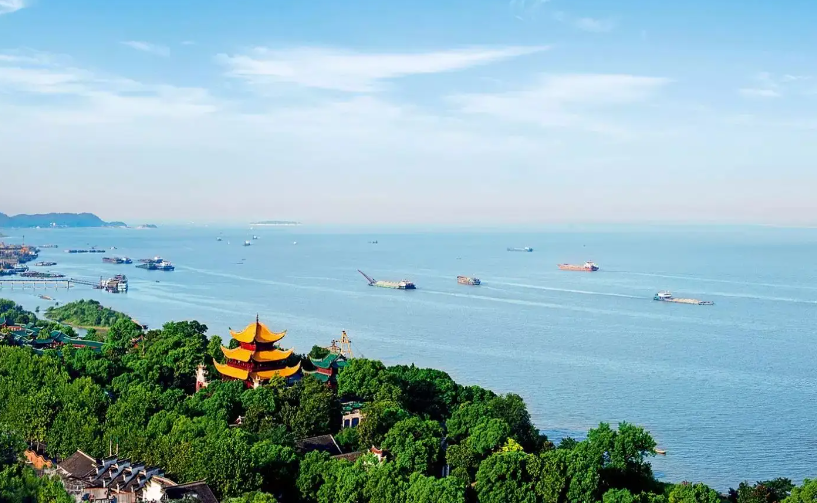
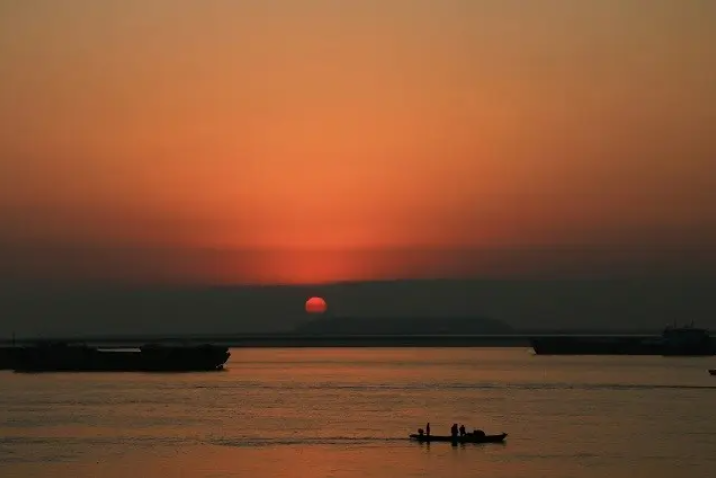
Yueyang Tower

Yueyang Tower is 19.42 meters in height and 17.24 meters in width, with an area of 250.66 square meters. The main tower is a pure wood structure and supported by four hypostyle columns, 12 corridor pillars and 20 eaves pillars. Its helmet roof is unique in the country and makes the building exquisite and imposing.
Sanzui Pavillion

Sanzui Pavillion is situated on the north side of Yueyang Tower. It was built in 1775 and rebuilt in 1867 when the building was renamed “Sanzui Pavilion”. The wood-structure pavilion faces west and is 11.59 meters high with an area of 135.7 square meters. Its roof is covered with blue glazed tiles.
Xianmei Pavilion

Xianmei Pavilion, located on the south side of Yueyang Tower, was built of wood in 1639, rebuilt in 1775 and renovated in 1880. It is 11.99 meters high with two layers of overhanging eaves covered with blue glazed tiles.
Huaifu Pavilion

Huaifu Pavilion faces north and is 6.5 meters high with a hipped roof held by four square pillars. In 1962, on the occasion of the 1,250th anniversary of the birth of Du Fu, a patriotic poet of the Tang Dynasty, the World Peace Council listed him among the world’s four most famous cultural figures. As Du Fu once lived in the area of Yueyang in his later years, Yueyang people built a pavilion to commemorate him.
Tomb of Xiao Qiao

The tomb of Xiao Qiao, a beauty in the Three Kingdom period, was originally located in the campus of the No.1 High School of Yueyang, and moved to the east side of Yueyang Tower about 100 meters away in 1992. The round tomb follows its structure in the Qing Dynasty and the tomb area covers an area of about 1,400 square meters.
Gate of Yueyang

The Gate of Yueyang was the west city gate of the city in ancient times. The 38-meter-long tunnel of the city gate runs along the longitudinal axis of Yueyang Tower through the city wall. The doorway of the tunnel is 2.1 meters wide and 3.18 meters high.
Zhanyue Gate
Zhanyue Gate

Zhanyue Gate (South City Gate) has a height of 17 meters and a width of 2.96 meters. The building was used by officials to deal with political affairs, so it was built in accordance with the standards of the government office at prefecture level.
Ancient City Wall

The ancient city wall, whose highest point reaches 16 meters, is 1,200 meters long. It features 400 arrow stacks and 3 watchtowers, the outer wall of the city wall, which was used to send signals in ancient times and served as stairs with aesthetic value. The structure of the wall was derived from that of the ancient city wall of Jingzhou in Hubei Province, and over 400,000 grey bricks of the wall came from eight cities of six provinces.
Poem Corridor along the Dongting Lake

The Poem Corridor along the Dongting Lake consists of 126 stone pieces connected with each other by wave-like iron chain, on which excellent poems on the Dongting Lake and Yueyang from various dynasties were carved.
Traditional Style Street

The Traditional Style Street (Bianhe Street) is located across the street from Yuezhou Confucious’ Temple, a key cultural relic unit under national-level protection, covering an area of 30 mu (2 hectares). It reaches Yueyang Tower in the north and the Dongting Lake in the west, with a total length of more than 320 meters and a total construction area of 18,000 square meters. The street is divided into 4 commercial districts with more than 150 stores. The inner street is in the middle and the outer streets are on the east and west sides. Bianhe Street adopts antique buildings, reflecting the style of Chinese traditional architecture and striving for the integration of traditional culture and commerce.
Baling Shengzhuang

Situated 500 meters south of Yueyang Tower, Baling Shengzhuang (South Gate of the Yueyang Tower Scenic Area) faces south, with a construction area of 1,000 square meters and a width of 55 meters. Its yellow roof edges are unique in style, while the eastern windows are beautifully hand-carved in lapis lazuli. The carvings of lotus flowers, lotus puffs and lotus leaves on the main ridge of the roof and the beams all highlight the charm of Hunan culture.
Five Dynasty Bronze Towers

The Five Dynasty Bronze Towers reproduce Yueyang Tower of different styles from the Tang, Song, Yuan, Ming and Qing Dynasties in miniatures. Each building is built by brass with reference to the architectural styles of the relevant dynasties.
Yueyang Tower in the Tang Dynasty

The model is 5.39 meters wide and 5.19 meters high with a net weigh of 12.3 tons. The inscribed board on it is written by Yan Zhenqing, a calligrapher in the Tang Dynasty.
Yueyang Tower in the Song Dynasty

The model is 3.608 meters wide and 4.5 meters high with a net weigh of 12.2 tons. The inscribed board on it is written by Mi Fu, a calligrapher in the Song Dynasty.
Yueyang Tower in the Yuan Dynasty

The model is 3.608 meters wide and 4.3 meters high with a net weigh of 12.2 tons. The inscribed board on it is written by Zhao Mengfu, a calligrapher in the Yuan Dynasty.
Yueyang Tower in the Ming Dynasty

The model is 1.86 meters wide and 4.5 meters high with a net weigh of 9.1 tons. The inscribed board on it is written by Dong Qichang, a calligrapher in the Ming Dynasty.
Yueyang Tower in the Qing Dynasty

The model is 4.43 meters wide and 4.83 meters high with a net weigh of 10.7 tons. The inscribed board on it is written by Emperor Kangxi in the Qing Dynasty.
Stone Tablet Gallery

The old Stone Tablet Gallery located on the southeast side of the east square of Yueyang Tower was built in 1984 and inlaid 65 stone tablets, with a total length of 32 meters and a height of 5 meters. The new Stone Tablet Gallery is connected to the Five Dynasty Bronze Towers, creating a visual continuity. It is shaped like a long piece of golden key with a total length of 240 meters and a construction area of 800 square meters. The new gallery has significantly improved the level and taste of the works, adding nearly 50 famous inscriptions from different dynasties.
Lv Dongbin's Temple

Lv Dongbin’s Temple, located 100 meters north of Yueyang Tower, is built to worship the immortal Lv Dongbin. The wood-brick temple faces south and covers an area of more than 1,000 square meters. Inside the main hall there is a golden statue of Lv Dongbin.
Dongting Lake

The Dongting Lake area is on the south bank of the Jingjiang River, the middle reach of the Yangtze River, spanning Hunan and Hubei. The Dongting Lake can be roughly divided into three parts including the East Dongting Lake, the South Dongting Lake and the West Dongting Lake. The East Dongting Lake, where Yueyang is located, was included in the list of national key scenic areas, namely the Dongting Lake—Yueyang Tower Scenic Area in 1988.

The Dongting Lake was known as “Eight-Hundred-Li Dongting” in ancient times. At the end of the 1990s, it was estimated to occupy an area of 2,579.2 square kilometers, considered the second largest freshwater lake in China. The Dongting Lake is an important flood basin of the Yangtze River with a large flood storage capacity, which has protected the people along the Yangtze River from numerous floods.


